We’re excited to introduce you to the always interesting and insightful Erin Parish. We hope you’ll enjoy our conversation with Erin below.
Hi Erin, thanks for joining us today. I’m sure there have been days where the challenges of being an artist or creative force you to think about what it would be like to just have a regular job. When’s the last time you felt that way? Did you have any insights from the experience?
I addition to being an artist I have had day jobs at all forms of arts organizations: art museums, galleries, non-profits, as a studio assistant to artists, as well as an adjunct painting professor at Queens College. My father was a professor emeritus of painting at Wayne State University for some 40 years, so I learned the ups and downs of that career track. I matriculated through graduate school at Queens College and won an adjunct teaching position in painting. However, I looked like I was 15, which made it difficult to gain a sense of professorship and authority with the students.
I was a waitress for a week once, in high school, and only had one customer, who ordered chili. He had to ask me for the spoon, so uninitiated in customer service was I. My job as a cashier at McDonald’s, also in high school, lasted for a few months. We were told that if someone came in with a gun to hold up the place it was every man for himself as the manager would be in his bulletproof cubicle. It was imperative that each employee realize that the manager would open the door to save exactly none of us. I learned early on the sadness and staleness of being a cog in a larger machine in which one was expendable.
I grew up in the Motor City, populated with automobile assembly line workers. I distinctly remember huge layoffs permanently changing the mood on the street. People lingered sadly, nowhere to go and no money to get anywhere.
I once worked as a temp at a law firm for a few weeks and was offered a permanent position. This was the closest to a “normal” job I’ve had outside of foodservice. I yearned to get back to the art business. The office atmosphere of files atop files, towering precariously on all available flat surfaces and the endless need to photocopy under the drop ceiling with hard fluorescent lights, phone ringing, was a kind of Kafkaesque experience.
I am supremely satisfied to be an artist who creates what I want, when I want, how I want. Being one’s own boss and the sole energy behind the business is all-consuming. There is no stepping away from work at the end of the day when one is the 100% driving force for anything to get done. Real vacations are supplanted by working vacations, fortunately, I very much enjoy this.
My jobs through the early years were highly educational as to what I wanted my day not to look like. I have carefully molded my life to be as idyllic as is feasible as a self-supporting artist. To spend hours, days, months, years in service of earning in order to make myself feel better about my hours, days, months, and years working was in opposition to my education.
I went to alternative, environmentally-minded schools where we were taught to care for the earth, instead of plundering her. Nurturing the individual development of the child was central to the Rudolph Steiner educational system I attended. I received my bachelor’s degree from Bennington College, where one creates their own program of study. With very few prerequisite courses, we were encouraged to move towards one’s grand plan from day one. I was very fortunate to know what I wanted, which is where I am today.
I love what I do and would in no way prefer to do anything else. I am in love with paint, how it moves and drips, dribbles and splashes and how it smells. I love the way an artwork can feed the soul and bring harmony to a space. I recognize that I’m pretty fortunate to live the way I do as well as to have the support from my friends and family. I have created my perfect bubble.
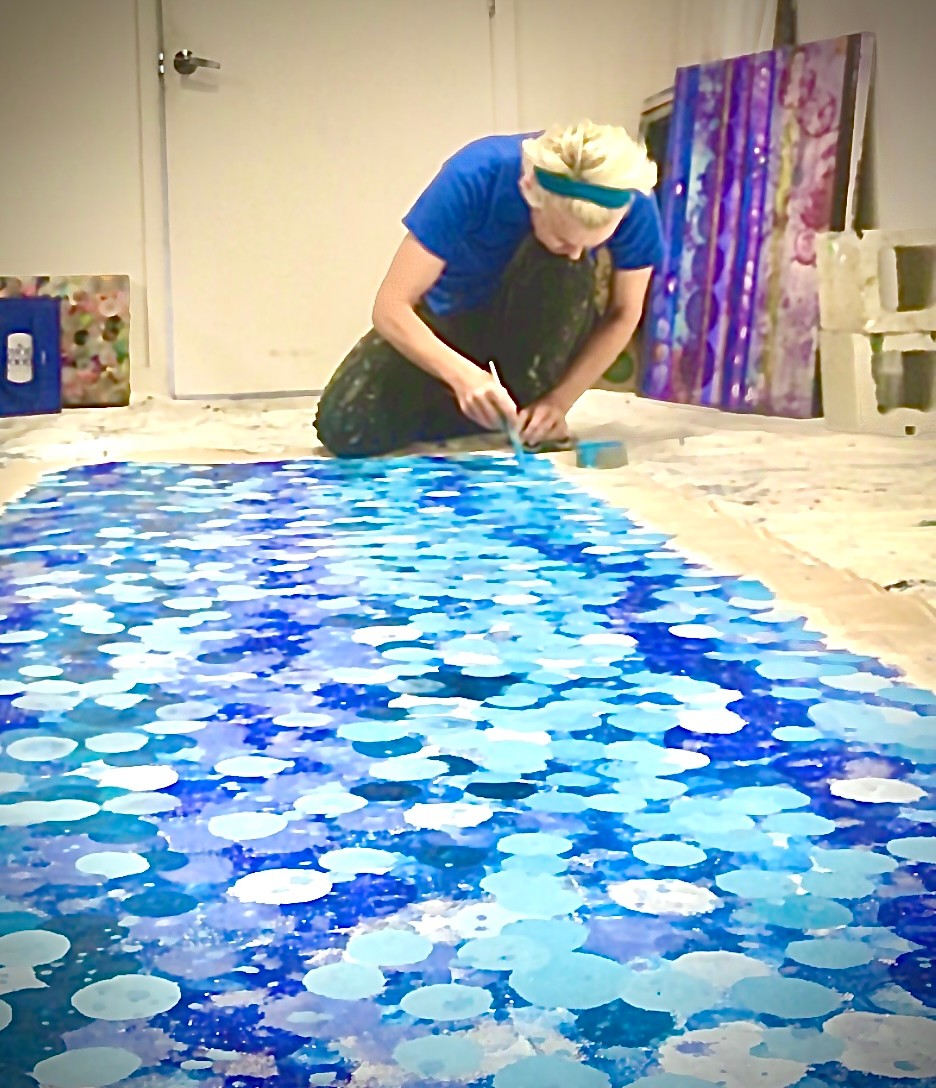


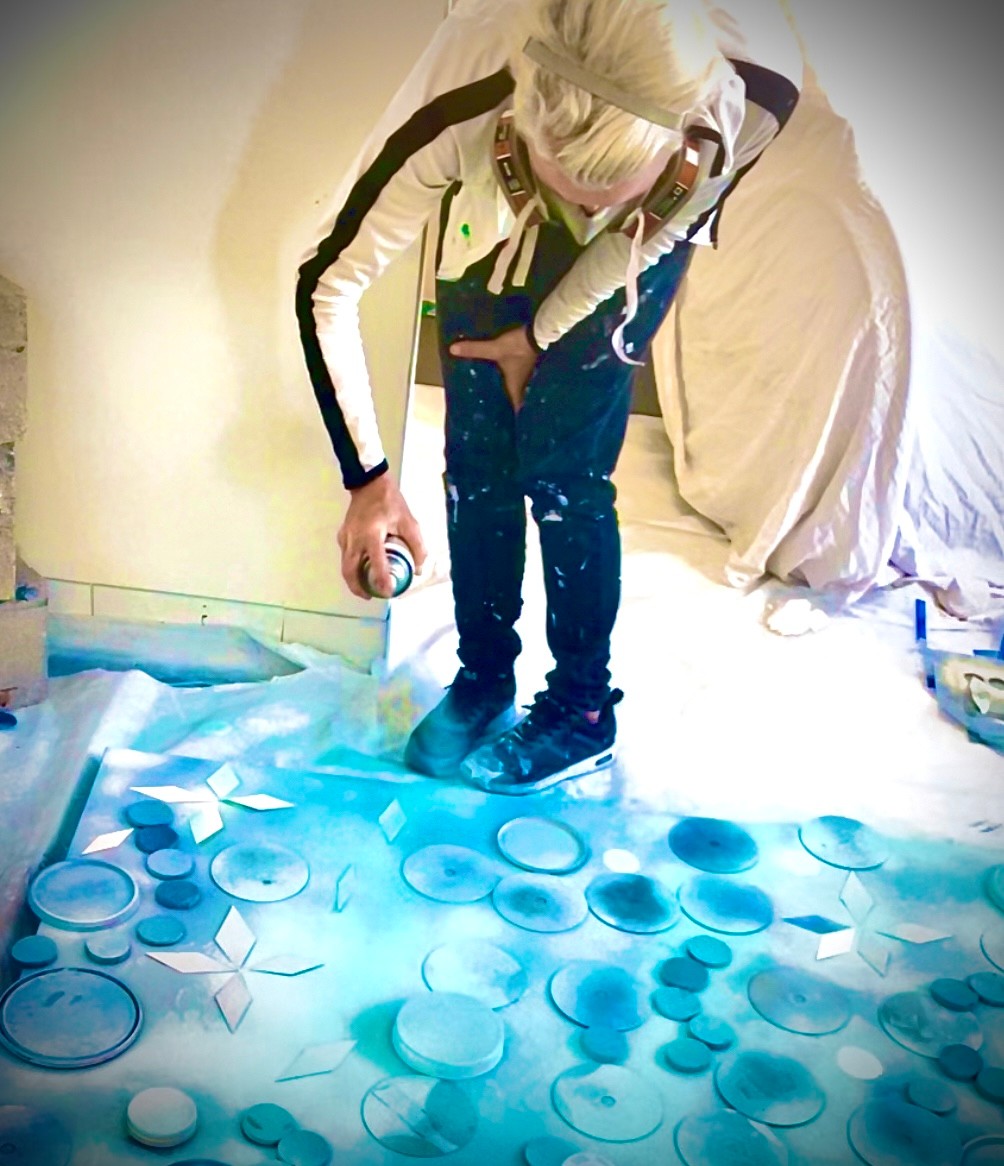
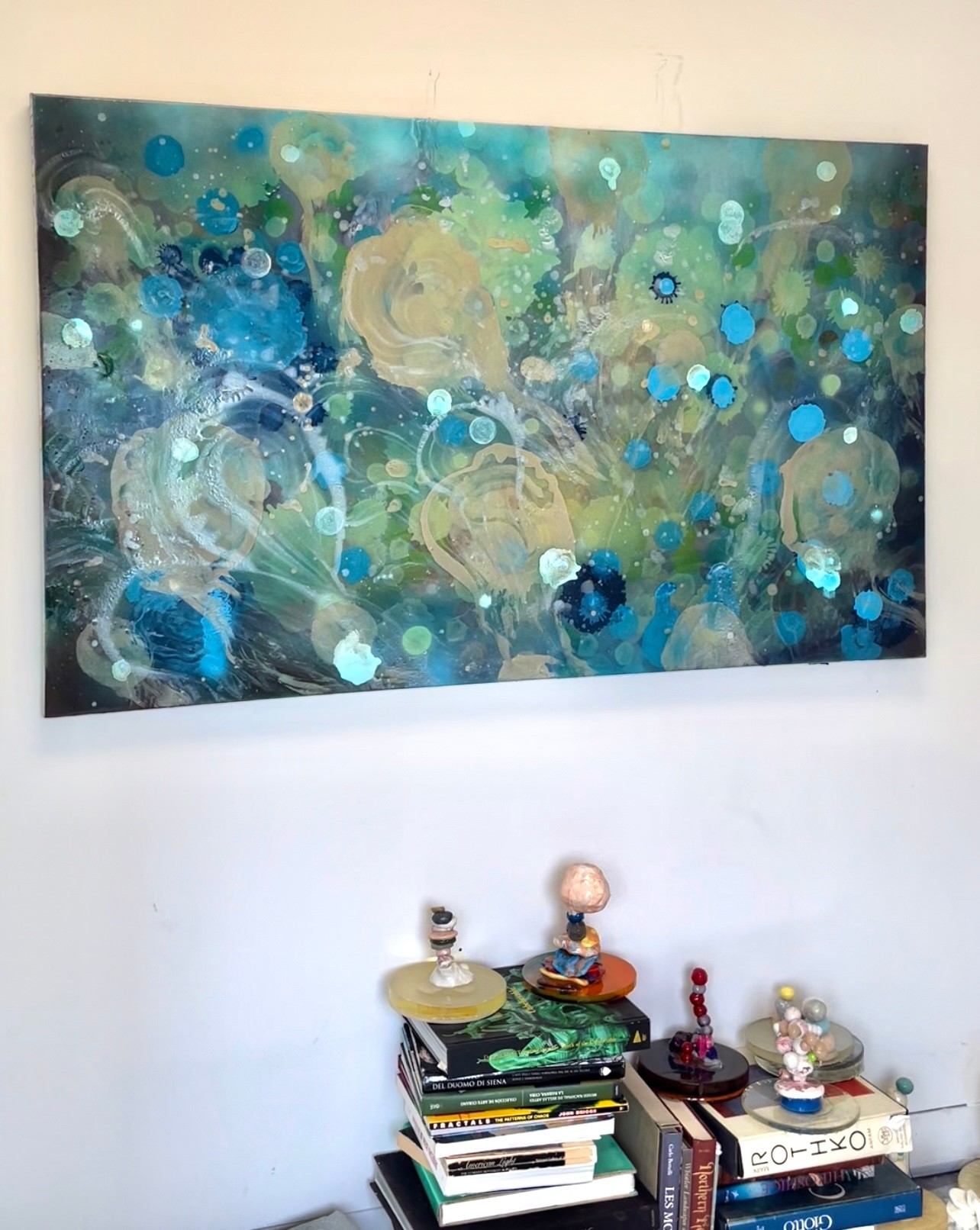
Great, appreciate you sharing that with us. Before we ask you to share more of your insights, can you take a moment to introduce yourself and how you got to where you are today to our readers
The most important thing I like to share about my development: I am the only child of four artist parents.
Quality artbooks and supplies were always available to me from an early age. My mother likes to tell about me being in the crib next to her when she’d paint. She’d entertain me with her book on Picasso, turning the pages to keep my focus. While store-bought toys were nearly non-existent in my house, I spent a lot of my childhood alone drawing or reading. It was the age of the “boob-tube,” and hours in front of the t.v., with its’ three channels, were not permitted.
I grew up in Detroit, lived on a hippy commune with no running water or electricity in southern Indiana with my mother and her partner. I then moved in with my father andstep-mom. We lived in a 5000 square foot loft in racially fraught downtown Detroit, then known as “Murder City.” The three of us all had studios in the loft, which we’d be in during the evenings.
I was given my own studio at age 11 and have had one ever since. People ask when it was that I became an artist. It was something I always did and immensely enjoyed so there is no “before” I was an artist. In college, I went in studying violin and painting. I gave up the violin as the two require drinking from the same creative well. As an artist I was taught you must give all of yourself over to being in service to the work of art.
I did a term abroad in England in high school and a term abroad at a German university in West Berlin in college. I graffitied on the Berlin wall in 1987, had my first solo show at age 21 two years later. I lived and worked in the New York City art world for twenty years. I have had over thirty solo shows and received early acclaim in the top art magazines. I’ve supported myself for over twenty years through painting sales.
I have done artist residencies in Provincetown, Vermont, eastern Pennsylvania, and Havana, Cuba. I am looking forward to my next foriegn residency which is in Helsinki. I look forward to seeing the Northern Lights and making digital artwork that will become NFTs. I have an upcoming exhibition in New York City with my long-time gallery Winston Wachter Fine Art and a show planned to exhibit the works made in Finland in the new year in Miami.
Currently I live and work in South Beach, Florida and have a work space at the Peekaboo Art Studios.
How can we best help foster a strong, supportive environment for artists and creatives?
Primary to offering support is first exposure to and familiarity with art and artmaking techniques. Including arts education in the life of the student creates the opportunity for further exposure without the discomfort of intimidation. There is a mystery surrounding the visual arts due to a lack of education. Try to imagine if we never heard music and a late Miles Davis piece came on, or EDM. It would seem impenetrable if one had no exposure to this art form.
Arts funding for education has been in decline for a long as I can remember. As my father was an art professor and my stepmom a public school art teacher, I have been aware of this trend since my grade school education in the 1970s. Programs have been ever cut back to champion the sciences and athletics. An educational system should expose the student to all forms of communication, a well-rounded education.
As an artist, we expose ourselves, when showing our work, to being told that someone’s two-year-old could do that. This insults the entire proposition of visceral, non-objective artwork. This is a comfortable place for the young, as they don’t have the pre-digested notions of what constitutes quality. To accurately reproduce what stood, often literally, in front of them does not have the same weight as it did before the camera became an artists’ tool.
I spent much of my adult life in the company of doctors in my twenties and thirties. In this social arena, it is like telling someone you can see the future and that you have two heads to say you’re an artist. They look at you like “poor retarded child,” when they have no idea of the history of mankind is reflected in the visual arts. Image-making predates the written language, science, and leisure time to play sports.
When I am in Cuba, and I say I’m an artist, it is met with smiles and curiosity. I have had the same experience with Cuban ex-pats of all walks of life in Miami. They have had the education that the United States has trimmed as fat from public schools. In Europe, one is met with a similar acceptance.
After the education comes curiosity and participation. This leaves the mind open to experience different thought processes, to experience life from another point of view. This is a way to understand the life of another, to have compassion and identification with others’ description of the human condition.
Were people secure enough in their own tastes, an entire creator ecosystem could thrive. The need for “approved” labels, such as Louis Vuitton, could be supplanted by people purchasing equally-priced locally-made high-quality goods. A purse, earring, cup, or coaster made by an individual enriches the creator’s life and livelihood. Imagine if that $500 spent on a purse by Coach instead went into the local community. First Ebay, then Pinterest and Etsy have been promising for this micro-economy.
There have been high hopes in the democratization of art through the NFT craze. Increasingly people are making money as gurus, self-appointed soothsayers, in the education about this medium. Everybody wants a piece of the pie, but only one that will be a good investment. Purchases made, inspired by some wordless connection the viewer, a genuine curiosity, are in the minority. The more I understand the nuances of the variety of NFT platforms, the more I see how loopholes will divest the creators of the residuals that are a revolutionary idea in the visual arts.
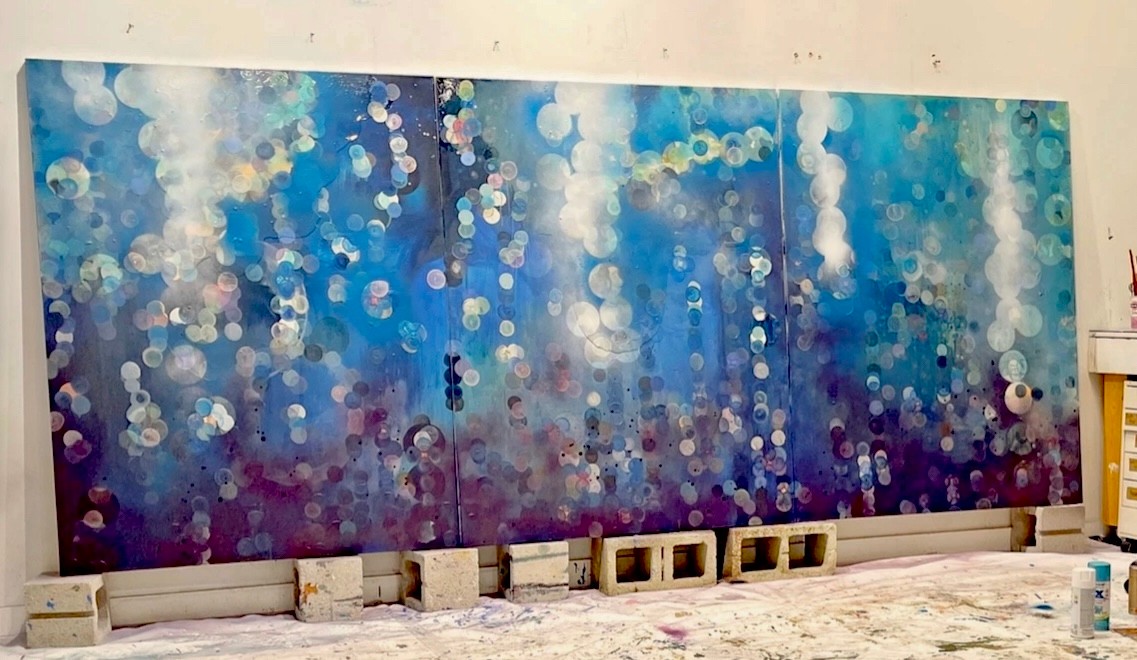

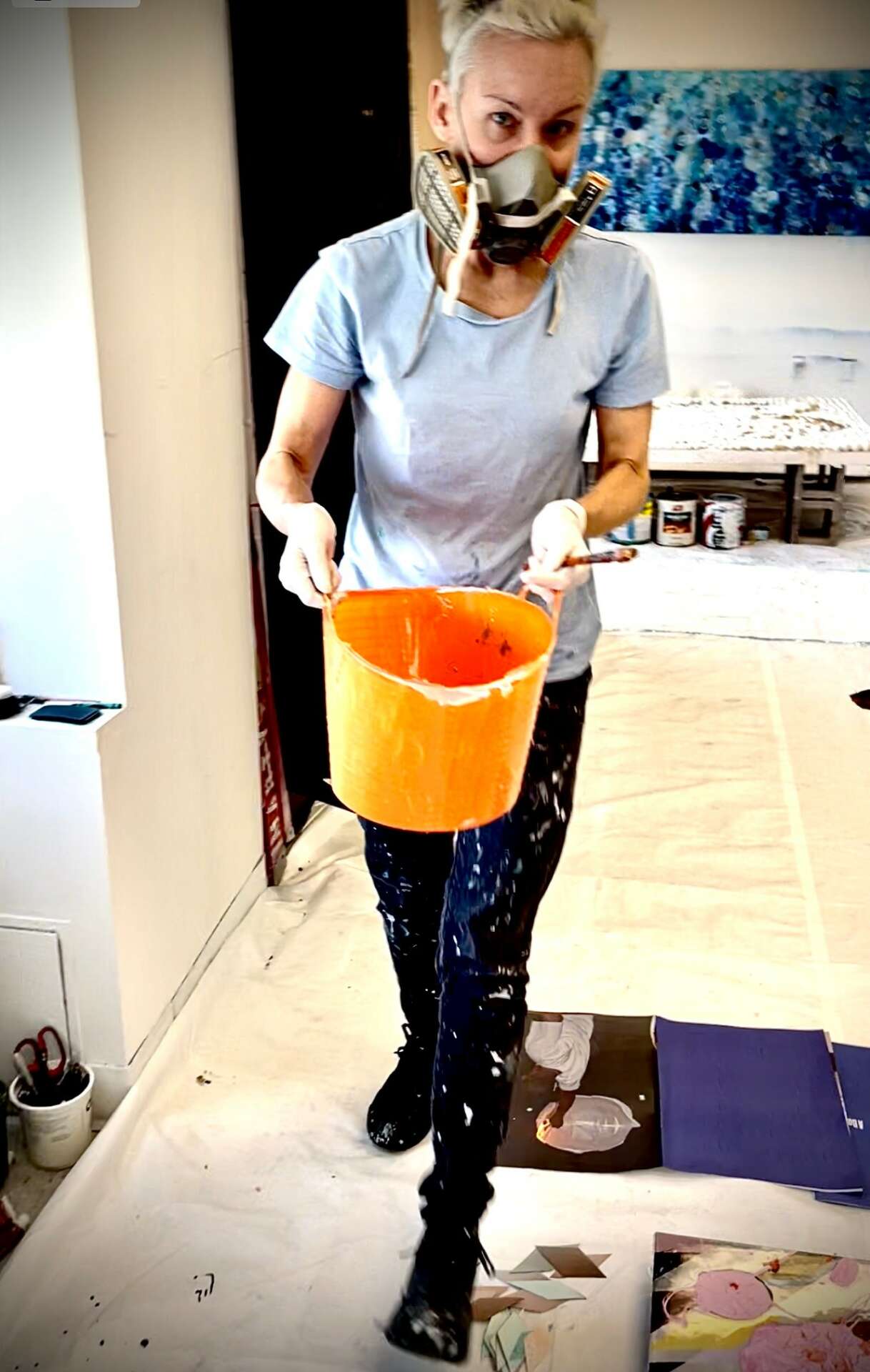
Alright – so here’s a fun one. What do you think about NFTs?
I first was left cold by the entire proposition of NFTs and had a learning curve to accept this new form of ownership. I thought of the loss of the sensuality of something made by hand in ages-old materials. I then came across a Chuck Close Doughnut by N20rmal on Opensea. This was my first experience with NFT fever and I felt I would be gratified to own this work of art. From the experience of this fever, I began to wrap my mind around purchasing something that exists within the construct of the metaverse and the need for a device to access the work of art.
The NFT I liken to purchasing an MP3 when they were new. We had to transform our idea of ownership when we no longer could hold something tangible. The pleasure of pouring over an album jacket as the music played was a sweetness we were to lose. As we accustomed ourselves to ephemeral ownership, the condition was created for the NFT boom.
I was slow to convince as this society developed alongside gaming, which was not my world. I grew up with the first wave of games like Pong. Nine months after an introduction to NFTs I had the opportunity to partner with someone to make works that would satisfy me, far away from the bored ape and simple gifs.
The NFTs I made used a high res image of a painting I had long ago sold, sometimes decades ago, as the base layer. As my paintings are made in layers, I was comfortable right away with shapes moving at different rates with different properties.
I made seven pieces that were dreamy and meditative, meant to soothe the interior landscape of the viewer. I came up against basic marketing differences with my business partner as he was hesitant to release the work and wanted to put his creative spin on things, though he had no experience in any creative processes.
After much counsel with others, I learned that, parallel to my NFT experience, in filmmaking, there are always ideological differences between the creators and the producers. It always comes down to the schism between the will to output something of the utmost quality opposed to the producer’s purely financial ideology. My producer/partner focused solely on their profits as the be-all and end-all. Money superseded all other measurements of quality and they were focused on massive editions, upwards of 300. To ignore all the tenants of my business, about scarcity being an inherent part of the assessment of valuation, and to withhold the release of the works which caused me to miss multiple opportunities was simply frustrating.
Their assertion that I would be nowhere in digital expression without them prompted me to take stock. I was surprised by what I found.
I first exhibited a digital video work at a solo exhibition I had in New York in 2000. Since receiving a grant for a digital video camera in the 1990s I had been involved in this medium. Over the years I have made hundreds of digitally modified images, digital prints as large as 144 feet long on permanent exhibition, small abstract films, and variations on my paintings as I played with them in Photoshop since the application first came on to the prosumer market. I recalled that in the snowy first semester in college at Bennington I was led to the computer science building by a classmate to try the MacPaint program. As I have recognized how I had been educating myself with the developments of digital media all along. I have been cognizant of this “new” medium since 1984 and have seen it take many forms, primarily as sculpture, as with Jeff Wall and Nam Jun Paik.
Fascinating is the ability to inspire the desire to own abstract real estate. Fascinating is the mind’s ability to be acquisitive for the non-material. Fascinating are all the little developments that created these conditions.
NFTs are here to stay, but the frenzied feeding from this economic bubble will go through a series of corrections before it settles down. I am making digital works that could be minted, however at this point, I will take it slowly.
Contact Info:
- Website: erinparish.com
- Instagram: @erinparishartist, @erinparishcurator
- Twitter: @ErinParish
- Youtube: https://www.youtube.com/channel/UCqI_SxASyPo80k3MH2OVLtg
Image Credits
all images credit Erin Parish, 2022


